This might start some verbal wars, but here goes. And for you keyboard commandos who know all about this subject, keep in mind that any arguments you make in favor of point shooting will be in opposition to real-life gunfighters who have lived this stuff and decided that sighted fire is superior to point shooting, even at close range, for staying alive.
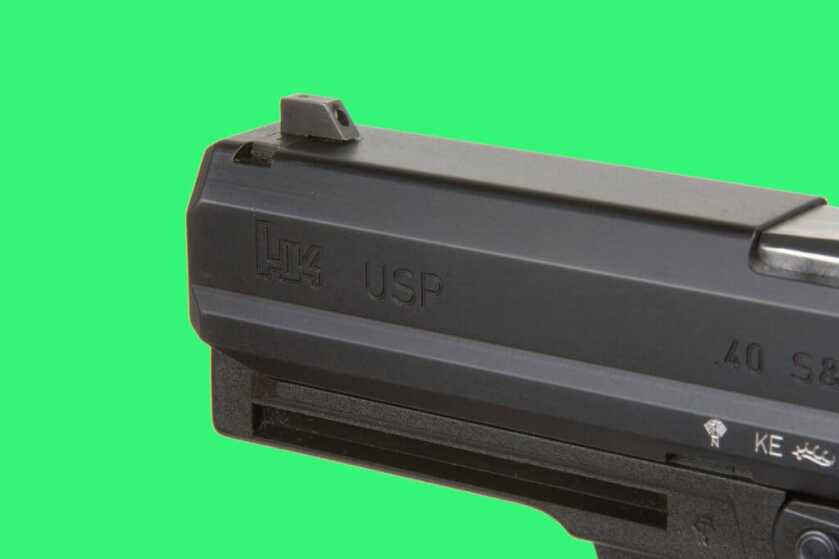
We are talking about primarily handguns here because that is the most common type of gun used in personal defense. While many of these points also can also be applied to long guns, they do not apply to wing shooting with a shotgun.
If you care to look, you can find a video on YouTube of a shooting at a school board meeting in December of 2010 that took place in Panama City, Florida. The shooter attempted to shoot five board members from a distance of roughly five yards. He fired multiple rounds and did not hit a single person, despite the fact it is apparent that he was pointing the gun at them. We will never know for sure, but he probably was attempting to point shoot. And it was obviously ineffective.
It is very tempting, and probably human nature, to focus on the target when shooting. And most people who are not trained swear that just pointing and shooting is faster than trying to aim using the sights to shoot.
But the best shooting schools like Gunsite Academy, those that teach gunfighting and not just shooting, teach students to use the sights, even at close ranges like three yards. The method taught is to focus very hard on the front sight, align the sights with the target, let the target and the rear sight become blurry – most people cannot focus on two or three at the same time – and press the trigger while holding them all in alignment. Then they have students repeat the process over and over, doing it many times in order for it to become a habit and automatic.
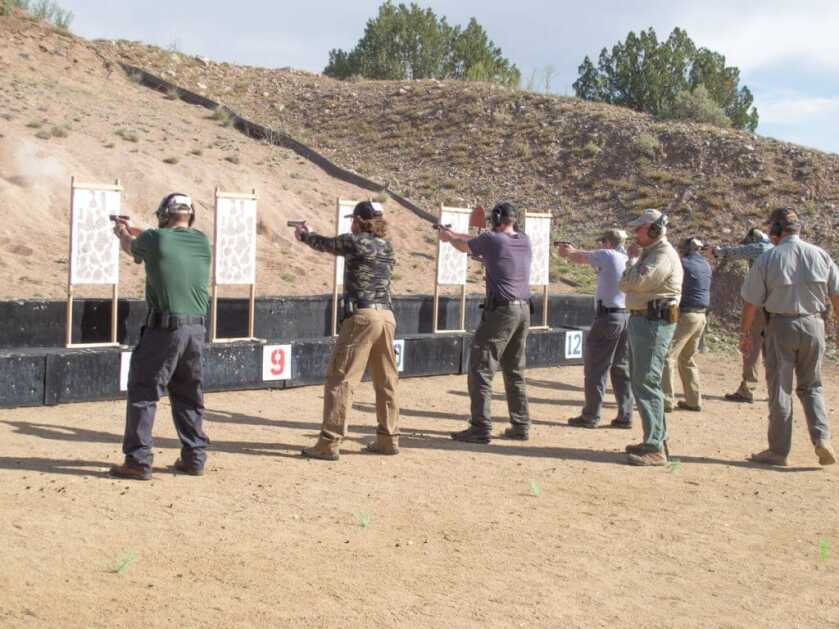
While some people think that using the sights, especially at close range, is slower – and for an untrained person that might be right – that is not correct for someone who is trained and has practiced sufficiently. So why should a person learn to use the sights, even at close range? Because even at close range, even experienced shooters often miss the target if they point shoot. And, with proper training, using the sights is just as fast as point shooting. That has been proven over and over again.
The key is using the sights correctly and then practicing until doing so is automatic. That’s reaching a level of unconscious competence, which I have discussed before in this series of The What & The Why articles.
An argument often used by advocates of point shooting is that it is natural for a human being to focus on the threat – that’s the target – and not on something else. But just because it is the body’s natural response which probably was inherited from a time when weapons were all contact instruments or stones, is not a good reason to ignore the fact that there might be a better way to do something when a different tool that is more effective is used. That tool is often a gun. And shooting a gun is not a natural thing to do, even if you are a male born in America, so training in how to do it is needed.
Someone always brings up exhibition shooters who have the ability to shoot from the hip, without using the sights, and do it very fast. They are amazingly accurate. And they are, but how much practice have those people been willing to put in to be able to do that consistently? They have shot a lot more rounds to get to that level of competence than the average person has to shoot using sighted fire to become fast and accurate. And, as the distance to the target increases, those exhibition shooters use the sights anyway. So even for the best exhibition shooters, point shooting is a close-range affair.
The average person who is not especially gifted does not have the ammunition or time to devote hours and hours of practice to hit a target using point shooting at close range. So the best gunfighting schools teach students to use the sights. And they teach students to use the sights at all ranges unless they are so close to the target that there is not enough room to bring the gun up to eye level.
At close range, perhaps a person with a little training in point shooting can hit a person in the chest or the head. Maybe, but there is case after case where people, including cops, have missed a man-sized target at close range with multiple shots. And sometimes even a center shot to the heart won’t stop an attacker. It requires a headshot to do so. Okay, the head is still fairly large at close range. That may be true, but to make an effective headshot, the bullet must get through the skull and damage a critical organ, specifically the brain or spinal column.
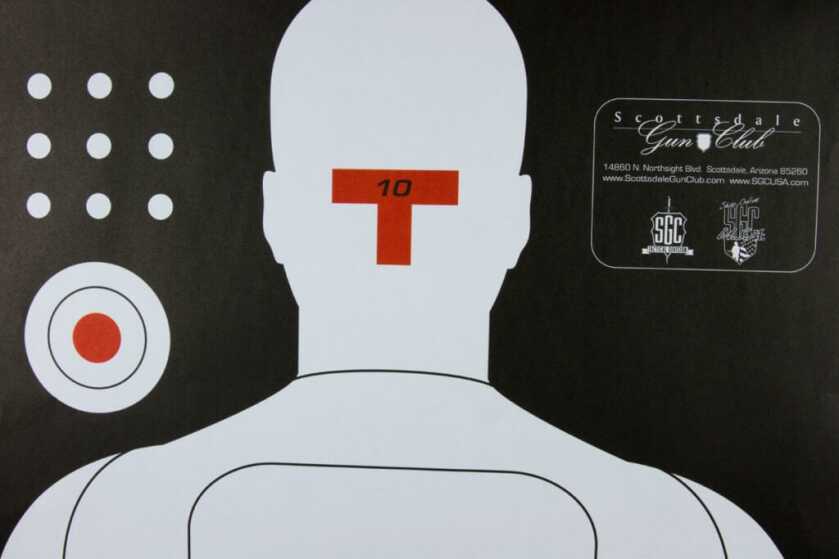
There are many cases where people have been shot at very close range in the head, and while it may be messy and cause a lot of bleeding, the bullet glances off and does not penetrate the skull. So gunfighters have learned that to increase the odds that a headshot will stop an attacker, they aim for the ocular cavity which is a small triangular area between the eyes and the tip of the nose. The skull is softer and thinner there, so penetration to vital organs is more likely. And that ocular cavity is pretty small, roughly three inches by two inches. So, even at close range, those gunfighters train to use the sights.
Someone who favors point shooting usually says that most gunfights occur at close range, like three yards, so there is no need to practice using the sights. And while most gunfights are close-range affairs, not all are. And the farther away the target, the more critical a good aim is, and that requires the use of sights. Don’t bet your life on the fact that your gunfight may be at close range. It might not be. And plenty of documented cases prove it.
Rob Leatham is a competitive shooter and has won many, many titles. His nickname is The Great One. And he has earned it. He is such a good shooter that elite military and law enforcement units use him as an instructor. He travels all over the world to teach some pretty special people who have a high level of shooting skill. And he teaches sighted fire.
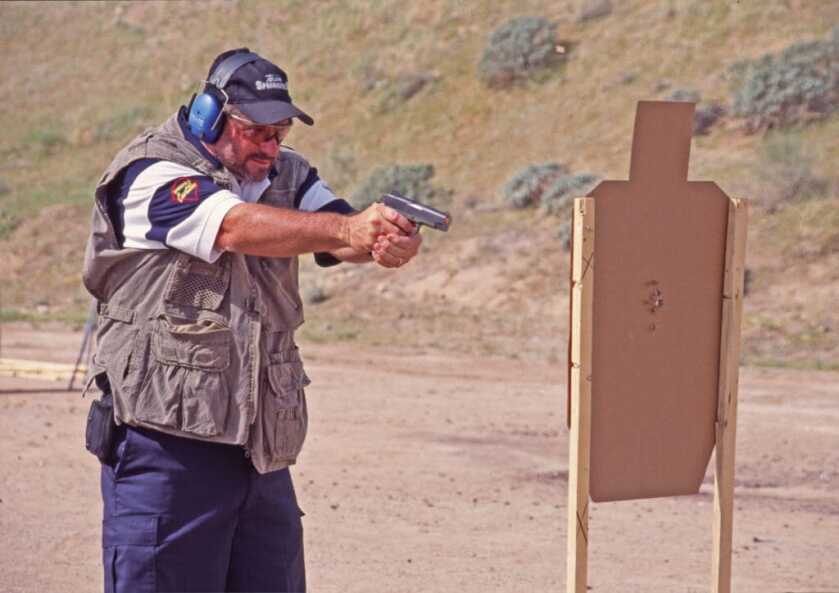
While Leatham says that a hard front sight focus is not critical, he also says that it is critical to align the sights with the target while the trigger is stroked. Remember, he is teaching highly skilled, experienced shooters who know how to aim a gun. These people have gone way beyond the skill level of most shooters. But he still teaches them to use the sights. So while they may not focus hard on the front sight, they still see the sights well enough to at least unconsciously confirm that the sights are aligned with the target.
Other top-level, well experienced gunfighters who also instruct, agree with Leatham. But to get a person to the level that they do not need a hard focus on the front sight takes a great amount of training and many repetitions.
One large metropolitan police force used to teach both point shooting and sighted fire. The point shooting, or unsighted fire, was reserved for very close range. But then, the department stopped teaching point shooting, even for close range, and taught only sighted fire. The rate of accurate hits on targets by officers actually increased significantly after the department started to teach only aimed fire.
The late Jim Cirillo was a legendary member of the New York City Police Department Stake Out Unit. He was involved in many gunfights with felons at close range – inside businesses. Paul Kirchner interviewed Cirillo and wrote a book about him. On page 51 of that book, Jim Cirillo’s Tales of the Stakeout Squad, Kirchner says that, in Cirillo’s first gunfight, Cirillo focused so hard on his front sight that he could see the striations on it. Cirillo killed at least one felon that day and wounded others.
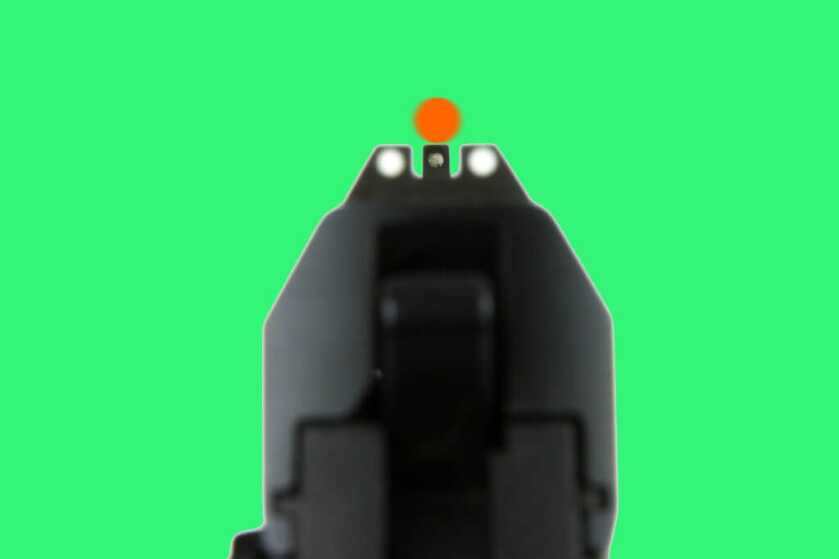
Cirillo also instructed. And he used to teach a technique where he obscured the sights to simulate low light where the sights were not visible. He then taught students to use the silhouette of the gun as a reference for aiming. It was very technical, but the point is that even when the sights were not visible, Cirillo advocated aiming the gun using some method. But he also said in his own book, Guns, Bullets, and Gunfights on page 84 that a shooter would be foolish not to use the sights if he can see them.
And that’s the what and the why of it.

If you want to avoid prison and are going to shoot someone at all you better be in fear of your life,,,,,like somebody who has a knife 2 feet away from your throat and closing or somebody that is 6 feet away and has a firearm pointed at you and is pulling the trigger. — Go ahead and get that sight picture and use perfectly aimed fire,,,,,and you are going to get your throat cut or you will have 2 large exit holes in your back before you fire the first shot. – If you are going to use only aimed fire practice by have someone ram a hot cigar into your bare chest and then shoot your 20 rounds and reload with another magazine while he sticks another one on your cheek. – Better learn to hit the target when you are in pain, ’cause if it ever gets real it’s a skill you are going to need.
You go for your pistol and i’ll go for mine and I’ll have 2 shots in you before you get your pistol half way up to your eyes,,,,,and I use a 2″ revolver. It takes training and practice but anybody can learn to instinctively put 3 rounds in an 8″ circle in just over 1/2 a second.
I am already pulling the trigger as my weapon clears the holster and the timing is such that the hammer falls as I cross your belt buckle. Then the second shot hits you just below the neck area as you go down,,,,,having never fired a shot. – That’s the way I learned to do it in the Army, and at the FBI School in at Quantico and on the streets when I was a Cleveland Policeman.
Maybe all the National and grand national pistol champions are full of shit when they use point shooting at anything under 21 feet. Sights are for punching paper in competition.
Self defense is NOT a hobby. It can get real in milliseconds and trust me I know from real life experience, when it does it’s nothing like on TV , dear hunting or in Soldier of fortune magazine. ,,, It’s OK to piss yourself when it happens. – I did the first time….not so much the second, though. I was just scared shitless.
Pointing is much faster, and speed in a close combat situation is crucial. I taught quick point, (quick kill) in the military. Kids with no civilian firearms experience could, by the end of the day, hit an aspirin tablet thrown in the air with a BB gun with no sights, front of back. One out of 5 could hit a bb in the air. And it was instinctive and instant.
Practice is the key, so it becomes automatic, when there’s no time to think or aim.
Former LE officer, been doing private protection for 15 years since and a certified (handgun) instructor. A couple of things – I have received considerable training in both methods. Both can be extremely effective. An earlier comment mentioned something that is extremely important and often omitted from the various training exercises – situational factors. Examples: wide open space, indoor setting, available cover, presence of innocents…..the list is literally endless. I would agree that in theory, with all other things being equal, the proper use of sights is “better” – a larger number of accurate hits. At the same time, I will offer the example of my wife. She has never had ANY formal technical training or instruction. I have an admittedly absurd number of handguns and she has access to all of them, yet she always opts for a small frame, (5) round, “snub” nose (2” +/- barrel) revolver in .38spcl. She does not aim – no sight alignment, no sight picture…..she sees her target, she raises her weapon and she fires. Ridiculously accurate, deadly precision with what is notoriously an inaccurate weapon for most shooters, most of the time. I do NOT want her after me with it. Moral: if it ain’t broke, don’t “fix” it. Try sight utilization, try point shooting, practice, practice, practice and do what works for you. ALWAYS be aware of what’s in your line of fire – don’t focus so hard on your intended target OR your front sight that you overlook the child 15 yards beyond and 5 degrees right of your point of aim. The real world is ALOT different than punching paper at the range.
Right on! I was going to go with a: “LOL”! Have YOU ever been in combat (I have) & have you ever worked at “point shooting”? If “YOU” are skilled, point shooting out to at least 3 yds is much faster AND believe me, when you have to draw & shoot “cross body”, strong side, or behind, you better be able to point shoot! It ain’t rocket science! It’s practice. ahhh whatever! Try it, you might be surprised.
One of the great advantages of the Red Dot Sight on handguns is the ability to use aimed fire while focusing on the target. State of the art handguns with red dots are fast and accurate with no compromises.
Its really the same as a flash sight picture when shooting at intermediate distances. Focus on the target/threat and let the front sight go blurry.
3 words
Robert Taubert
Rattenkreig
I used to practice two to the chest, one to the head. During a Tactical Training class I asked the instructor (a metropolitan police captain who was an cadet instructor) if that was a good practice. He said yes but you need to hit the ocular area as bullets could glance off head particularly because the bad guy might be moving. An alternative third shot would be to the groin area where there are major arteries intersecting from the legs and a shot to hip would probably stop the person from moving. Gruesome but that target is larger and when he person is moving would be easier to hit.
Doug, the author is simply wrong.
He seems to lump shooters into 2 groups.
1) properly trained shooters who use the sights
2) untrained shooters who point shoot.
He completely ignores the 3rd group.
3) PROPERLY TRAINED shooters who point shoot.
I say this having completed the Reflexive Shooting class at Sig Sauer Academy. This class teaches the where, when, and why of reflexive/instinctive/point shooting.
And then they drill it into you until it is instinctive. This class was A REVELATION to me. I had shot IDPA for 15 years and was rated Expert in SSP. (which tells you I’m not terribly talented)
After taking this 2 day class (during which time I went through 1600 rounds of ammunition) I was able to instinctively increase my reference to sights as the threat got farther away.
10 ft – I could point, and hit a dinner plate sized target as fast as I could squeeze the trigger.
50 ft – it was a hard focus on the front sight.
Everything in between was more or less focus on the front sight depending on the size of the target and the distance.
This is a proven skillset. To have the author brush it aside as keyboard commando garbage is just ridiculous.
Unless you’re shooting your bow from the hip, I suspect it would be because archers draw the bow such that their eye & arrow for the most part, are already naturally in line with the target – much akin to shooting a shotgun.)
(FWIW – I’m a shotgunner (clays) but every few yrs I’ll occassionally dig out my compound bow but in no way do I consider myself an archer or expert on the subject – just my thoughts on your question.)
FBI gunfight data says first shot out wins most fights. Be 71 on Tuesday, don’t see and don’t use front sight.
Been training point/shoot since 2010. Sometimes you’re stuck with what you’re stuck with. Training makes the best of a less than ideal situation.
So, many traditional archers (me included), do what is often referred to as “instinctive” aiming. This is essentially point-and-shoot and experts are amazingly accurate (not including me). Anyone have any thoughts why it works with a bow but apparently not with a handgun?
I would speculate this is, at least in part, due to the additional point of reference of your hand coming to the same point on your cheek every draw.
How does having a laser on a handgun change the dynamics of this discussion? Thanks.
Sighted fire and hard focus on front sight with alignment on the Threat ADD: , while engaging (shooting) that Threat. Fire and repeat as necessary. That is the most straight forward action within the complexity of Gunfight. There’s always a lead into it, (Situational Awareness), committment to Priorities (closest, weapons, and even Threat composure/nervousness), watch hands, watch peripherals. Its only when you commit to taking the shot(s): you tunnel vision on the sight picture as previously stated. We must identify and counter other present or arriving Threats. You can’t just shoot every fuzzy body silhouette that falls beyond sights: you better confirm they’re a Threat. Two in an ally is easy, two in a street mob is not. You must avoid making your hard focus into what’s termed “Target Fixation” (just look it up). Multiple & new Threats must be engaged and we’re not going to check for a pulse on the first Threat/Priority before moving on. Put bullets in Threats and repeat as needed, seek cover, reload and get some distance.
Its short sighted (pun) to teach defensive sighted fire like it’s one on one at the Range and that will meet the complexity of any gunfight, including one on one. JMHO but I’m still standing!